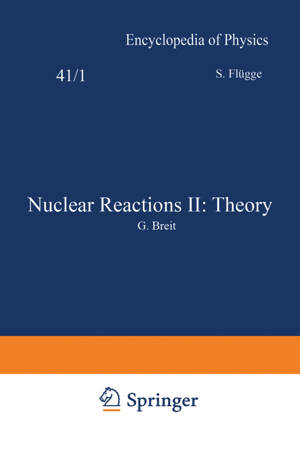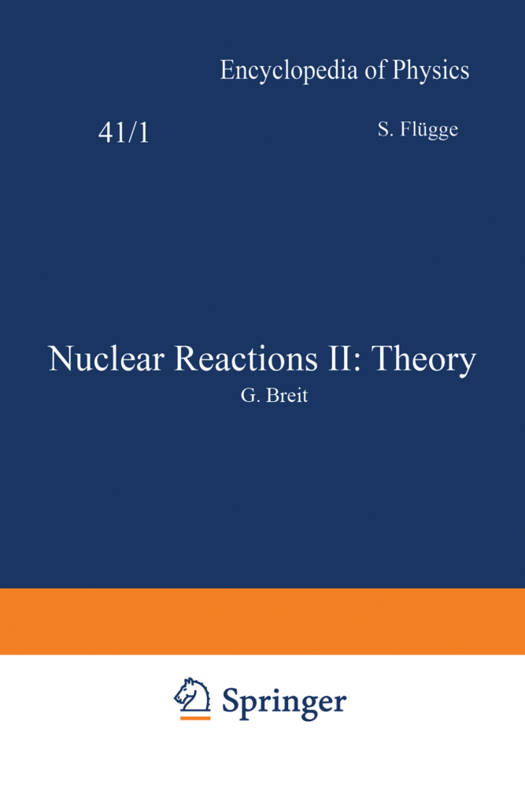
- Afhalen na 1 uur in een winkel met voorraad
- Gratis thuislevering in België vanaf € 30
- Ruim aanbod met 7 miljoen producten
- Afhalen na 1 uur in een winkel met voorraad
- Gratis thuislevering in België vanaf € 30
- Ruim aanbod met 7 miljoen producten
Zoeken
Nuclear Reactions II: Theory / Kernreaktionen II: Theorie
S Flügge
Paperback | Engels | Handbuch der Physik Encyclopedia of Physics | Kernphysik / Nuclear Physics | nr. 8
€ 107,45
+ 214 punten
Omschrijving
449 one finds that for y = Fo (e) C=: n; V3 [Po (2'Yj) 3 -kjF(i) ] (2'Yj)! Fd (2'Yj) 3 -ijF (-m, } 1 ( 14.17) C2 =: n; [ - (2'Yj)! Fd (2'Yj) 3 -ijF(i) ] Fo (2'Yj) 3 -;r(i)J, and if y is to be Go(e), C and Chave the same form with Go (2'Yj) replacing Po (2'Yj) 1 2 and G (2'Yj) replacing Fd(2'Yj). The values of the functions at eo =2'Yj may be ob- tained from (14.8). 1 J. K. TYSON has employed the modified Hankel functions of order one- third 2 as solutions of (13.4) to obtain expressions for the Coulomb functions for L =0 which converge near e =2'Yj. His results appear as linear combinations of the real and imaginary parts of n (x) = (12)!e-;/6 [A;{- x) - iB;(-x)J, (14.18) and its derivatives multiplying power series in x = (e - 2'Yj)j(2'Yj)1. For values 1 away from the turning point for L =0, TYSON has obtained forms for Po{e) and Go(e) which are similar to (13.1) to (13.3). The JWKB approximation is again the leading term, and some higher order corrections are given. Expressions similar to Eqs. (14.11) and (14.12) have been obtained by T.D. 3 NEWTON employing the integral representation of (4.4). His results give re- presentations of FL(e), Gde) in the vicinity of e=2'Yj [whereas (14.11), (14.12) converge near e=eLJ when L
Specificaties
Betrokkenen
- Auteur(s):
- Uitgeverij:
Inhoud
- Aantal bladzijden:
- 580
- Taal:
- Engels
- Reeks:
- Reeksnummer:
- nr. 8
Eigenschappen
- Productcode (EAN):
- 9783642459252
- Verschijningsdatum:
- 14/06/2012
- Uitvoering:
- Paperback
- Formaat:
- Trade paperback (VS)
- Afmetingen:
- 170 mm x 244 mm
- Gewicht:
- 929 g

Alleen bij Standaard Boekhandel
+ 214 punten op je klantenkaart van Standaard Boekhandel
Beoordelingen
We publiceren alleen reviews die voldoen aan de voorwaarden voor reviews. Bekijk onze voorwaarden voor reviews.








